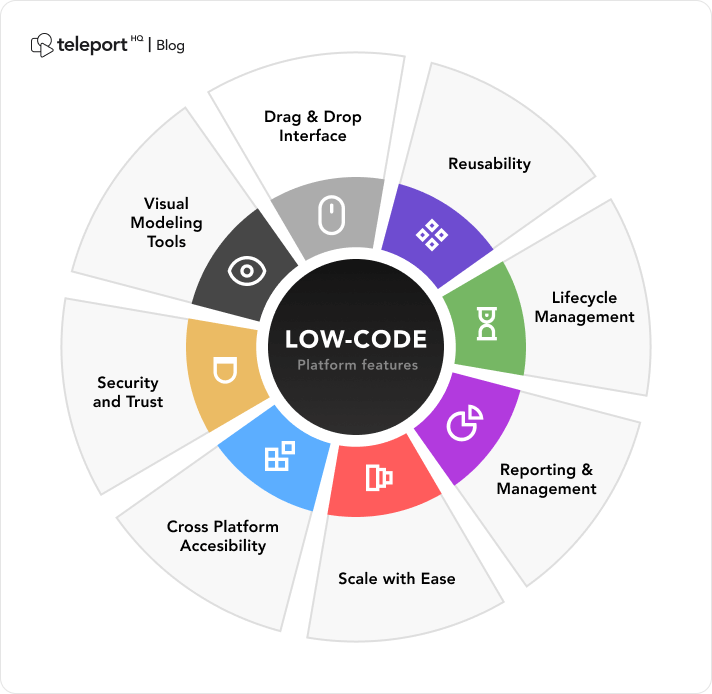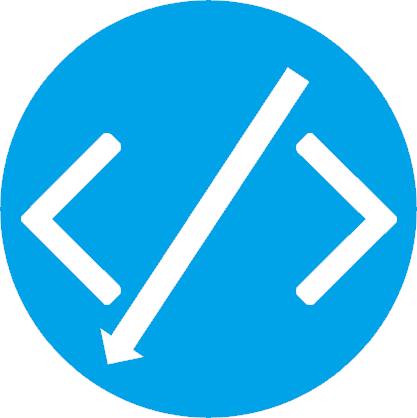Best Tips To Selecting Low-Code Platform Examples
Wiki Article
Benefits Of Low-Code Application Development In The Sense Of Accessibility To Non-Developers
Low-code app development improves accessibility for non-developers (often referred to as "citizen-developers") due to certain key aspects.
Drag-and-Drop Builders: Low-code systems have drag-and-drop interfaces, which allow people who are not developers, and without the necessity of writing code, to build visually-based applications. This makes the development process easier for those with no technical backgrounds.
WYSIWYG: WYSIWYG editors are "What you see is what you get" editors that allow users to create workflows and interfaces similar to the finished product. This makes it simpler to use and understand.
Simplified Workflow and Logic Design:
Visual Workflow Modeling - Users can design business procedures and logic for applications using visual flowcharts and models. This is more simple than traditional programming methods.
Pre-built Components of Logic Low-code platforms often come with already-built logic (e.g. loops or conditional statements) which can be easily set up, eliminating the requirement for complicated programming.
Reusable Components and Templates
Template libraries that are pre-built: Many low code platforms provide libraries of the most commonly used kinds of software, giving non-developers to have a foundation to build upon and then customize.
Reusable modules and widgets: The development of websites is made easier through the use of reusable components and modules. This means that there is less requirement for technical expertise.
Guided Development and Tutorials
Step-by step guides Platforms offer tutorials, tips on screen, and guided development paths to assist non-developers in creating applications.
Interactive Tutorials Interactive tutorials and hands-on ones let users learn by doing. They build confidence making use of the platform.
Integration with existing tools
Seamless Integration: Low-code platforms are built to integrate seamlessly with existing tools and systems in business (e.g. the ERP or CRM), which permits non-developers to build applications that can work within existing workflows.
APIs, connectors: These tools facilitate integration by allowing developers who are not (or even users) to link their applications to external services.
Collaboration Features:
Team Collaboration Features, like real-time collaboration and shared workspaces, help non-developers and professionals to collaborate effectively.
Role-based Access Control: Non developers are able to be assigned certain roles, with appropriate access levels. This lets them participate in the development process without compromising security or functionality.
Automated Testing and Debugging:
Low-code platforms include tools for testing and debugging that are built-in. They automatize the process so it is simpler for non-developers to make sure their apps work.
Error Highlighting When problems occur, the platform highlights these and suggests solutions. It helps non-developers in solving the issue.
Development using low-code is more accessible to non-developers as it makes development more accessible to everyone. Low-code platforms provide intuitive visual tools, guided user experiences, and allow business users to actively take part in the creation, maintaining and updating applications. View the most popular Low-code Platform for application development for blog recommendations including application modernisation, app modernisation, no code platforms, ms azure sql, cross platform mobile development, jdbc server, rad development, mobile development platforms, stored sql procedures, no code platforms and more.

Low-Code Application Development Offers Numerous Benefits, Particularly In The Area Of Cost-Effectiveness.
The low-code approach to app development is an affordable solution with many benefits. It's a great option for companies who want to make the most of their budgets while delivering quality apps. Below are some of the main benefits.
Less Coding Requirements: The low codes platforms remove the requirement for complex hand-coded, custom-built applications. Developers can take less time and energy developing applications. Also, it means less labor cost.
We have fewer resources available for developers. Programming low-code is faster and easier, so there are fewer developers who have specialized knowledge are required. This could drastically cut costs of staffing and hiring.
Speedier time to market:
Accelerated development cycle: Visual development tools and pre-built components provided by low-code platforms facilitate rapid application development. This allows companies to bring their products market quicker. This will result in faster revenue growth and improve the competitive position of their products.
Rapid prototyping. Businesses can quickly test and create prototypes. This helps reduce time during the development phase, and allows for rapid iterations based on feedback from users.
Reduce Maintenance Costs
The modular structure and standard components of apps developed using low-code platforms makes them simpler to maintain. This reduces the ongoing maintenance and support cost.
Automated Updates: A lot of low-code platforms can handle patches and updates in a way that is automatic and ensure that applications are secure and up-to date without needing lengthy manual intervention.
Efficient Resource Utilization:
Contributions by non-developers: Low-code platforms allow non-developers, such as business users, to participate in the development process. This allows businesses to leverage the skills of a wider range of employees, thus reducing dependence on developers who are highly paid.
Utilizing IT resources efficiently: IT teams can concentrate on strategic projects instead of being stymied by routine work on development, thereby increasing productivity and overall efficiency.
Scalable Pricing Models
Subscription-Based Pricing: A lot of low-code software providers offer flexible subscription-based pricing models that scale with usage. This allows business to match spending to actual requirements and growth, while avoiding huge initial costs.
Pay-Asss-You-Go Option: Some platforms offer pay-ass-you-go options that ensure businesses only pay when they use resources. This is especially beneficial for small and start-up companies with small budgets.
Cost reductions of third-party software:
Low-code platforms usually come with functions that are integrated, eliminating the requirement to purchase additional tools or software. This can save you money on subscriptions and software licensing costs.
Pre-Built Integrations: The possibility of having of pre-built integrations to well-known systems and services reduces the need for the need for custom development. This saves time as well as cash.
Better ROI
Faster Return On Investment: Rapid development and lower expenses with a faster time to marketing will allow businesses to earn more return on investment.
Improved Agility: Businesses can quickly adapt to changes in the market and demands of their customers, ensuring that they stay relevant and can capitalize on new opportunities that arise.
Train for Less:
Low-Code Platforms have User-Friendly Interfaces. The user-friendly and intuitive interfaces reduce the learning curve of new users. This eliminates the requirement for extensive training programs.
Accessible Resources. A lot of low-code platforms offer extensive training materials and tutorials as well as community assistance. They make it less necessary to attend formal training which can be expensive.
Collaboration can be made easier.
Enhance Collaboration Tool The built-in collaboration tool facilitates better collaboration and communication between team members. This results in better development processes and reduces project overhead.
Unified Development Environment (UDE): A single, unified development environment simplifies workflows and reduces cost and complexity that comes with managing multiple platforms and tools.
In general, low-code apps are cost-effective due to their ability to lower costs for maintenance and development and to speed up time-to-market to optimize the use of resources, and to provide flexible pricing. All of these factors provide significant financial benefits for businesses, making low-code a compelling option for companies looking to maximize their development budgets while also delivering high-quality, flexible, and high-quality applications. See the most popular discover more on Enterprise application development with Low-code Platform for more recommendations including application modernization, application development platforms, app development platform, mobile app development platforms, develop web app, push notifications, rapid application design, lowcode no code, mobile development platforms, develop mobile application and more.

Benefits Of Low-Code Application Development In Terms Of Community Support And Vendor Support
Low-code application development platforms provide substantial advantages in terms of the support provided by vendors and communities. These are essential for successful implementation, ongoing maintenance, and continual development of the applications. Support for Vendors
Comprehensive Technical Support:
Support Teams: Several Low-Code platforms provide access to a dedicated support team that can assist in technical issues, guidance and troubleshooting.
Some vendors provide support 24 hours a day. This is particularly beneficial for businesses that operate globally and have different time zones.
Onboarding and Training:
Formal Training Programs: Many vendors provide a structured and organized training program which include webinars, tutorials and courses for certification, to assist users in getting up to speed quickly.
A lot of vendors offer personalized onboarding to help customers use the platform efficiently and adapt it to their needs.
Regular Updates and Enhancements:
Continuous Improvement Platform vendors typically regularly release updates that contain new features, performance improvements as well as security patches. This ensures that the platform is current and secure.
Feedback Integration: Many companies incorporate feedback from users in their process of development. This ensures that the platform adapts to the ever-changing needs and wants of their users.
Comprehensive Documentation:
Documentation is detailed: Users are usually able to access a wealth of well-organized documents that range in terms of complexity from basic modification to advanced.
API References API documentation can help developers build and integrate apps with the Low-Code platform.
Professional Consulting Services
Expert Consulting: Many companies offer consulting services for architectural planning, strategic planning and complex implementations. This assists users to maximize the software's capabilities.
Custom Development: Some vendors offer services that allow the development of specific features, or incorporate systems that aren't offered in the standard version.
Community Support for the Community
Active User Community:
Discussion and Forums: Many Low-code platforms feature vibrant online communities where users are able to ask questions, share strategies, and even collaborate with one another on the best practices.
Virtual and local User Groups These groups provide opportunities to network, learn and share your experiences.
Knowledge Sharing and Collaboration:
Community-Contributed Resources: Users often share templates, modules, and extensions that they have developed, which can be reused or adapted by others, accelerating development and innovation.
Crowdsourced problem solving: The collective experience and expertise of the community can be an invaluable resource for troubleshooting problems and coming up with creative solutions.
Learning and Development
Community-led training Community-led training: Many groups provide training sessions, webinars and workshops facilitated by experts who have experience in the area.
Online Tutorials and Courses: Community members often create and distribute online courses, tutorials, and how-to guide, improving the education resources available to all users.
Feedback and Influence
Community Forums for Product Feedback include many channels to provide feedback to vendors, which can influence the design of features.
Beta Testing Programs: Members of active communities could be able to be part of beta testing programs that give them early access to new features as well as a say in shaping the platform's evolution.
Recognition and Support
Community Recognition Programs: A lot of vendors have recognition programs to acknowledge the contributions of active members of the community for example, MVP (Most Valuable Professional) programs.
Peer Support Community members typically offer support to other members through sharing their knowledge and offering advice for those who aren't as skilled. This helps create a more collaborative friendly and supportive environment.
In general, the combination between strong vendor support and active, engaged communities, provides a comprehensive ecosystem of support for low-code development. Users will have the knowledge and resources to build, deploy and maintain their application.
